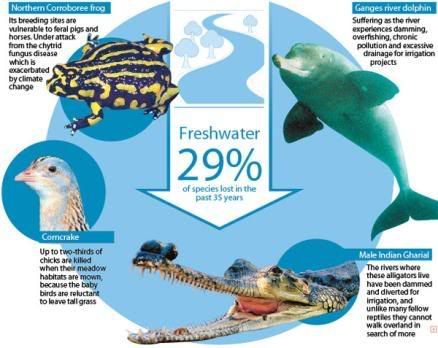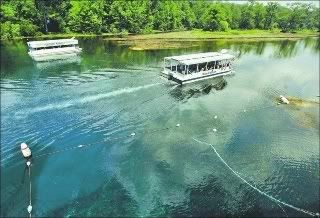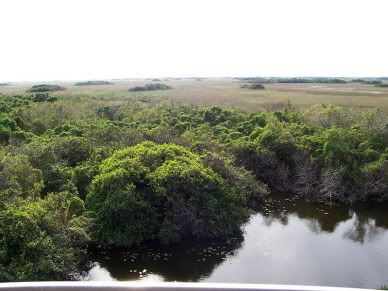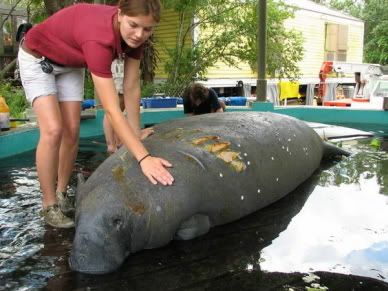Life, Liberty, Water
As climate change and worldwide shortages loom, will people fight over water or join together to protect it? A global water justice movement is demanding a change in international law to ensure the universal right to clean water for all.
By Maude Barlow
YES! Magazine
Summer, 2008

It’s a colossal failure of political foresight that water has not emerged as an important issue in the U.S. Presidential campaign. The links between oil, war, and U.S. foreign policy are well known. But water—whether we treat it as a public good or as a commodity that can be bought and sold—will in large part determine whether our future is peaceful or perilous.
Americans use water even more wastefully than oil. The U.S relies on non-renewable groundwater for 50 percent of its daily use, and 36 states now face serious water shortages, some verging on crisis.
Meanwhile, dwindling freshwater supplies around the world, inequitable access to water, and corporate control of water, together with impending climate change from fossil fuel emissions, have created a life-or-death situation across the planet.
Both Democrats and Republicans have emphasized loosening U.S. dependence on nonrenewable energy resources in their platforms, but neither party gives significant air time to the threats posed by water shortages.
This is not to say that no one is paying attention. In fact, water has become a key strategic security and foreign policy priority for the United States government.
Cut Deals, Carry Water
Corporate interests have pursued schemes to privatize, commodify, and export water for decades. We have seen how this plays out in Canada. For instance, in the late 1990s, Sun Belt Water, Inc., sued the Canadian government under NAFTA because British Columbia banned water exports, preventing a deal that would have sent B.C. water to California. Corporations have also made attempts to ship Canadian water as far as Asia and the Middle East, proposals that fizzled after fierce opposition from public citizens who were beginning to understand the dangers of permanently removing water from local ecosystems and placing it under corporate control.
Now the Pentagon, as well as various U.S. security think tanks, have decided that water supplies, like energy supplies, must be secured if the United States is to maintain its current economic and military power in the world. And the United States is exerting pressure to access Canadian water, despite Canada’s own shortages.
Under the name, “North American Future 2025 Project,” the U.S. Center for Strategic and International Studies (CSIS) brought together high level government officials and business executives from Canada, the United States, and Mexico for a series of six meetings to discuss a wide range of issues related to the Security and Prosperity Partnership, a controversial and tightly guarded set of negotiations to expand NAFTA. [See related story.]
“As … globalization continues and the balance of power potentially shifts, and risks to global security evolve, it is only prudent for Canadian, Mexican, and U.S. policymakers to contemplate a North American security architecture that could effectively deal with security threats that can be foreseen in 2025,” said a leaked copy of a CSIS backgrounder.
On the agenda for one of two meetings in Calgary were, “water consumption, water transfers, and artificial diversions of bulk water” with the aim of achieving “joint optimum utilization of the available water.”
The water and security connection deepens with the fact that Sandia National Laboratories, a vital partner with CSIS in its Global Water Futures Project, also plays a major role in military security in the United States. While Sandia is technically owned by the U.S. government, and reports to the Department of Energy’s National Nuclear Security Administration, its management is contracted out to Lockheed Martin, the world’s biggest weapons manufacturer.
Ralph Pentland, water consultant and primary author of the Canadian government’s Federal Water Policy in 1987, believes that the purpose of these cross-border discussions is to secure sufficient water for Alberta tar sands production in order to ensure uninterrupted oil supplies to the United States. Energy extraction would be far more attractive if a new source of water—potentially from northern Canada—could be brought to the tar sands through pipelines or other diversions. As long as the water doesn’t cross the international border, it is within Alberta’s power to do this.
These schemes to displace water from one ecosystem to another in the service of corporate profit are an environmental problem for the entire planet, which is another reason why water must form a crucial part of any progressive discussion around U.S. dependence on foreign energy resources.
Corporate interests understand the connection and are using it to make their case for private solutions to the water crisis. In language that will be familiar to critics who argued that the United States invaded Iraq not for democracy but for access to oil and profits for corporations, a 2005 report from CSIS’s Global Water Futures project had this to say about water:
“Water issues are critical to U.S. national security and integral to upholding American values of humanitarianism and democratic development. Moreover, engagement with international water issues guarantees business opportunity for the U.S. private sector, which is well positioned to contribute to development and reap economic reward.”
Water for All
Clearly, the powers that be in the United States have decided that water is not a public good but a private resource that must be secured by whatever means.
But there are alternatives.
North Americans must learn to live within our means, by conserving water in agriculture and in the home. We could learn from the many examples here and beyond our borders—from the New Mexican “Acequia” system that uses an ancient natural ditch irrigation tradition to distribute water in arid lands to the International Rainwater Harvesting Alliance in Geneva, that works globally to promote sustainable rainwater harvesting programs.
Conservation strategies would undermine the massive investment now going into corporate technological and infrastructure solutions, such as desalination, wastewater reuse, and water transfer projects. And conservation would be many times cheaper, a boon to the public but not to the corporate interests that are currently driving international water agreements.
At the grassroots, a global water justice movement is demanding a change in international law to settle once and for all the question of who controls water, and whether responses to the water crisis will ensure water for the public or profits for corporations. Ricardo Petrella has led a movement in Italy to recognize access to water as a basic human right, which has support among politicians at every level. The Coalition in Defense of Public Water in Ecuador is demanding that the government amend the constitution to recognize the right to water. The Coalition Against Water Privatization in South Africa is challenging the practice of water metering before the Johannesburg High Court on the basis that it violates the human rights of Soweto’s citizens. Dozens of groups in Mexico have joined COMDA, the Coalition of Mexican Organizations for the Right to Water, a national campaign for a constitutional guarantee of water for the public.
The U.S. and Canada are the only two countries actively blocking international attempts to recognize water as a human right. But movements in both countries are working to change that. A large network of human rights, faith-based, labor, and environmental groups in Canada has formed Canadian Friends of the Right to Water to get the Canadian government to support a U.N. right-to-water covenant. And a network in the United States led by Food and Water Watch is calling for a national water trust to ensure safekeeping of the nation’s water assets and a change of government policy on the right to water.
Such campaigns may have a fight ahead of them, but the vision is within reach: a United Nations covenant that recognizes the right of the Earth and other species to clean water, pledges to protect and conserve the world’s water supplies, and forms an agreement between those countries who have water and those who don’t to work toward local—not corporate—control of water. We must acknowledge water as a fundamental human right for all.


Wildwood Preservation Society is a non-profit 501(c)(4) project of the Advocacy Consortium for the Common Good. Click here to learn more.
"it's all connected"






















